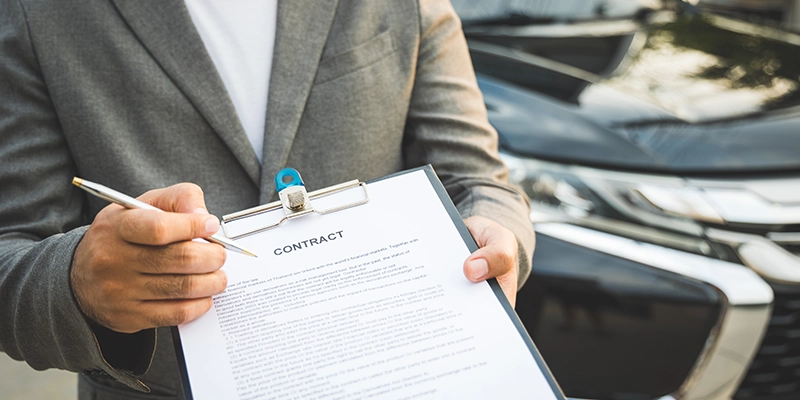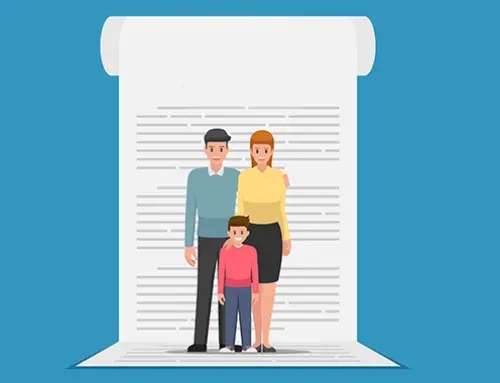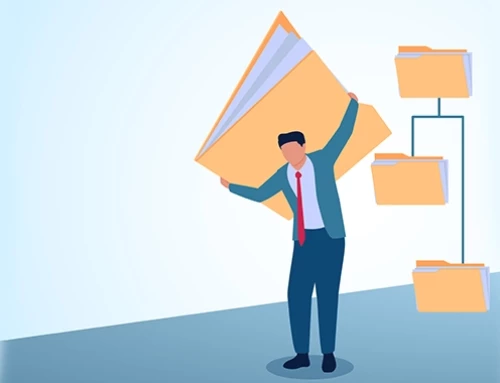Contents
Settlement and demand letters are vital in car accident cases. A demand letter outlines your client’s damages and compensation request, while a settlement letter finalizes the agreement. Clear, well-crafted letters can drive negotiations and secure fair outcomes, avoiding unnecessary disputes.
A. Understanding Settlement and Demand Letters
1. Definition and Purpose
Settlement Letters: A settlement letter is a formal written communication aimed at resolving a dispute amicably before proceeding to litigation. Typically, it is sent by one party (usually the defendant or their legal representative) offering terms for resolution.
Demand Letters: Conversely, a demand letter is an initial communication from the claimant or plaintiff outlining their case and demanding specific actions or compensation.
Settlement letters and demand letters play a pivotal role in the negotiation process with insurance companies and opposing parties. These documents outline the damages suffered and the compensation sought. A demand letter serves as a formal request, clearly stating the legal basis for the claim and providing evidence to support it. Settlement letters, on the other hand, are used to propose or respond to offers, helping parties move closer to an agreement without litigation. Crafting these letters with precision can significantly influence negotiations, fostering communication and often expediting resolution.
2. Legal Significance
Demand and settlement letters are integral components of the pre-litigation process, serving as formal mechanisms for initiating negotiations and potentially resolving disputes outside of court. The letters by framing the issue in a structured manner, can influence the settlement amount, encouraging the recipient to assess both the merits of the claim and the potential costs of prolonged litigation, thereby facilitating a resolution that may be more favorable or efficient for both parties. Should negotiations fail and the dispute escalates to litigation, these letters may have significant implications in the courtroom. They can be used as evidence of the parties’ attempts at resolution, potentially affecting the court’s view on issues such as reasonableness or good faith efforts. In this regard, demand and settlement letters not only serve as negotiation tools but also shape the litigation strategy and may influence the final outcome of the case.
B. Key Components of a Car Accident Demand Letter
A car accident demand letter outlines the claimant’s case and requests compensation for damages sustained in an accident. The following are the key components that should be included in the letter to ensure clarity, legal precision, and a strong case for settlement:
1. Client Information
The letter should begin with the claimant’s full name, address, and contact details. It should also include a confirmation that the claimant is represented by an attorney, if applicable. This section ensures the recipient knows who the claim is coming from and confirms legal representation if necessary.
2. Accident Details
This section should provide a clear and concise account of the accident, including the exact date, time, and location where the incident occurred. Additionally, a brief description of the circumstances surrounding the accident should be provided, outlining the sequence of events leading to the collision.
3. Liability Statement
the claimant should explain why the other party is at fault for the accident. This can include details about the other driver’s negligence, such as failing to yield, speeding, or running a red light, and any supporting evidence that shows how the other party’s actions led to the accident.
4. Injuries and Medical Treatment
The letter details the injuries sustained by the claimant as a result of the accident. include the type and severity of injuries, as well as an account of the medical treatment received, including hospital visits, surgeries, and any ongoing care or rehabilitation.
5. Economic Damages
A breakdown of the claimant’s economic damages, such as medical expenses, rehabilitation costs, property damage, and lost wages due to time off work. This section quantifies the financial losses directly related to the accident, providing a solid foundation for the demand.
6. Non-Economic Damages
In addition to financial losses, non-economic damages should also be addressed. This includes pain and suffering, emotional distress, and any other negative impacts on the claimant’s quality of life. Describing these intangible effects can help convey the full extent of the accident’s impact.
7. Demand for Compensation
The demand letter should clearly state the specific amount of compensation the claimant is seeking. This demand should be reasonable and justified based on the documented damages, both economic and non-economic. The claimant may also provide a brief explanation of how the requested amount was calculated.
8. Supporting Documentation
The letter should be accompanied by supporting documentation to substantiate the claims. This can include medical records, bills, accident reports, photographs of damages or injuries, pay stubs for lost wages, and any other relevant evidence that supports the demand for compensation.
By including these key components, a car accident demand letter ensures that the claimant presents a well-organized, thorough, and compelling case, laying the groundwork for effective negotiations with the insurance company or the responsible party.
C. Crafting an Effective Settlement Letter
An effective settlement letter summarizes past discussions but also lays out the legal rationale behind your position. To ensure clarity and effectiveness, an ideal settlement letter should include several critical components. These elements help respond to opposing arguments and present a reasonable settlement proposal, all while setting a clear timeline for moving forward. Below are the key elements that should be outlined in an effective settlement letter.
1. Recap of Negotiations
Start by summarizing previous communications, including offers made and discussions held. This sets the context and reminds the recipient of the history of negotiations.
2. Counterarguments to Previous Offers
Address any low or unfavorable settlement offers received. Clearly and respectfully refute the reasons behind these offers, highlighting their insufficiency or lack of merit in relation to your client’s case.
3. Legal Precedents
Cite relevant case law, statutes, or legal principles that support your client’s position. These precedents strengthen your argument and show the legal basis for your proposed settlement.
4. Final Settlement Proposal
Present a reasonable, well-supported settlement figure. Justify the amount with specific details about damages, expenses, and other factors influencing the settlement, ensuring it reflects the value of the claim.
5. Deadline for Response
Set a clear and reasonable deadline for the opposing party to respond to the proposal. This establishes a sense of urgency and ensures the matter progresses efficiently.
D. Best Practices in Drafting
1. Clarity and Professionalism
The primary goal is to ensure that the recipient can quickly grasp the key points of the case without confusion. Clear language also reflects professionalism and ensures that the letter is taken seriously. Maintaining a professional tone is essential. A settlement or demand letter should be courteous, respectful, and formal. Even when the letter contains strong demands or requests, it should avoid inflammatory or emotional language.
2. Accuracy and Completeness
The effectiveness of a demand or settlement letter depends largely on its factual accuracy and completeness. Ensure that all relevant facts are included, such as the date, time, and location of any incidents, the parties involved, and the details of the damages or injuries sustained. Any factual inaccuracies or omissions could harm the credibility of the letter and the case, potentially weakening the claimant’s position in negotiations or litigation.
3. Persuasive Writing Techniques
A demand or settlement letter is an opportunity to persuade the recipient to settle the matter on favorable terms. Crafting a compelling narrative that clearly explains why the recipient should agree to the proposed terms is essential. Establish the strength of your case and outline the facts in a way that highlights the other party’s liability and the severity of the damages. Use persuasive language to appeal to the recipient’s sense of fairness or reason and focus on the human element of the case, making it clear that settling the matter is in everyone’s best interest, both in terms of avoiding the time and cost of litigation and reaching a swift resolution.
4. Ethical Considerations
Ethics are non-negotiable in legal practice. Settlement and demand letters must adhere to all ethical standards, including honesty and fairness. Misrepresenting facts or exaggerating damages can harm your client’s credibility and expose you to disciplinary action. Keep in mind that these letters might later serve as evidence in court. Drafting them ethically ensures you maintain a strong position if litigation becomes necessary.
5.a Sample Demand Letter
Annotated Example
[Your Law Firm Name][Your Address] [City, State, ZIP Code] [Date]
[Recipient’s Name][Recipient’s Address] [City, State, ZIP Code]
Subject: Demand for Payment in [Case Name or Number]
Opening Paragraph:
This section should immediately state the purpose of the letter.
Example: “We represent [Client’s Name], who suffered [specific harm] due to [incident or breach]. This letter serves as formal demand for compensation in the amount of [specific figure].”
Facts of the Case:
Provide a concise summary of the facts, emphasizing relevant dates and details.
“On [date], [briefly describe incident]. As a result, our client incurred [specific damages].”
Legal Basis:
Reference statutes, contracts, or case law supporting your position.
“Under [specific law or contract provision], [Recipient’s Name] is legally obligated to compensate our client for the damages sustained.”
Demand and Deadline:
Clearly state the relief sought and set a deadline for a response.
“We demand [specific compensation or action]. Please respond within [reasonable time frame] to resolve this matter amicably.”
Closing Statement:
Maintain professionalism and leave room for negotiation.
“We hope to settle this matter without further action. However, if we do not receive a response by [deadline], we will proceed accordingly.”
Sincerely,[Your Name] [Your Title] [Law Firm Name]
- Key Takeaways
- Clarity: Begin with a clear statement of purpose.
- Facts and Law: Balance concise storytelling with solid legal references.
- Professional Tone: Show respect while being assertive.
- Structure: Use headings or bullet points to improve readability.
5.b Sample Settlement Letter
Annotated Example
[Your Law Firm Name][Your Address] [City, State, ZIP Code] [Date]
[Recipient’s Name][Recipient’s Address] [City, State, ZIP Code]
Subject: Proposal for Settlement in [Case Name or Number]
Opening Paragraph:
State the intent to propose a settlement.
Example: “In the interest of resolving the dispute between [Client’s Name] and [Recipient’s Name], we propose the following settlement terms.”
Summary of the Dispute:
Briefly recapitulate the case background.
“This dispute arises from [specific issue]. On [date], [describe the incident].”
Proposed Settlement Terms:
Outline the terms clearly, including monetary compensation, timelines, or other agreements.
“To settle this matter, our client is willing to accept [specific amount] and the following terms: [list additional conditions].”
Justification for Settlement:
Emphasize why the proposal is fair and reasonable.
“This proposal reflects [specific considerations, such as liability, damages, or mitigating circumstances].”
Call to Action:
Invite the recipient to respond within a specified timeframe.
“We look forward to your response by [deadline]. Please contact us to discuss any adjustments necessary to reach an agreement.”
Sincerely,[Your Name] [Your Title] [Law Firm Name]
Key Takeaways
- Conciseness: Keep the letter focused on resolution, not restating arguments.
- Reasonable Tone: Frame the proposal as mutually beneficial.
- Specificity: Clearly outline the settlement terms and deadlines.
- Forward-Looking: Indicate willingness to negotiate further.
E. Common Pitfalls to Avoid While Writing Settlement and Demand Letters
When drafting settlement or demand letters, it’s important to avoid certain mistakes that can weaken the letter’s effectiveness or damage the negotiation process. Below are some common pitfalls to be aware of:
1. Overlooking Critical Details
Missing key information can significantly undermine the impact of your letter. Each letter should include:
- A clear statement of the facts.
- Supporting evidence for claims or damages.
- Precise legal citations or contractual references.
- Specific relief or compensation requested.
Failure to include these details can result in delays, weakened negotiating positions, or outright dismissals. Always cross-check the letter against case files and evidence. Using legal management tools ensures comprehensive documentation and helps avoid omissions.
2. Emotional Language
While settlement and demand letters are inherently adversarial, they must remain professional. Overly emotional or aggressive language—such as accusatory statements or threats—can alienate the recipient and escalate tensions.
For example, avoid phrases like:
“Your blatant negligence has caused irreparable harm.”
Instead, frame issues neutrally:
“The incident resulted in damages that require resolution under applicable law.”
A calm, factual tone fosters collaboration and maintains your credibility.
3. Unrealistic Demands
Setting unreasonable compensation amounts or unrealistic terms can stall negotiations. If the demand seems exaggerated or baseless, the other party may disengage entirely.
Base your demands on:
- Actual damages supported by evidence.
- Precedent from similar cases.
- A realistic assessment of the other party’s ability to meet your terms.
Aim for a figure or resolution that leaves room for negotiation while addressing your client’s needs. Application software can assist in organizing case data and helping estimate reasonable demands.
F. Leveraging Technology in Drafting Letters
Application softwares allow drafting settlement and demand letters to be streamlined ensuring accuracy and removal of repetitive tasks. technology allows legal professionals to focus on strategy rather than administrative details. Here’s how to maximize efficiency with the right tools.
1. Efficiency Through Templates
Templates are invaluable for speeding up the drafting process while maintaining professionalism and consistency. Standardized templates provide a ready-made structure, ensuring no critical sections are overlooked.
Key advantages of templates include:
- Time Savings: Predefined formats eliminate the need to start from scratch.
- Consistency: Ensures all letters meet your firm’s standards and branding.
- Error Reduction: Prevents omissions by following a proven structure.
2. Automation Tools
Automation tools take drafting efficiency a step further by integrating client and case information directly into letters. Instead of manually inputting names, dates, or case details, automation tools pull this data from your case management system.
Benefits of automation include:
- Accuracy: Minimizes human error when filling out repetitive details.
- Speed: Auto-populated fields reduce drafting time significantly.
- Scalability: Enables firms to handle higher caseloads without sacrificing quality.
RunSensible: Enhancing Your Legal Correspondence
Effective legal correspondence requires accuracy, efficiency, and collaboration. RunSensible legal case management software transforms how law firms draft and manage settlement and demand letters, streamlining workflows and enhancing client outcomes. Here’s how RunSensible can help elevate your practice.
Streamlined Document Creation
RunSensible simplifies document drafting with customizable templates for demand and settlement letters. These templates include pre-structured sections that ensure clarity and professionalism.
- Save Time: Eliminate repetitive formatting tasks.
- Personalized Touch: Modify templates to suit specific cases.
- With RunSensible, you can focus on strategy instead of formatting.
Integrated Case Management
Access to accurate, up-to-date client and case details is crucial for drafting effective correspondence. RunSensible integrates case management with document creation, allowing you to:
- Retrieve client information instantly.
- Auto-fill case details for efficiency and accuracy.
- Avoid manual errors that can weaken your letters.
- This seamless integration ensures every letter aligns with your case strategy.
Collaboration Features
Collaboration is key when finalizing legal documents. RunSensible allows team members to review, edit, and comment on letters in real time.
- Real-Time Edits: Make changes instantly without version confusion.
- Feedback Integration: Streamline team input to finalize letters faster.
- By promoting teamwork, RunSensible helps you deliver polished, effective correspondence.
Secure Communication
Confidentiality is paramount in legal practice. With RunSensible, you can send letters directly to clients or opposing parties securely through encrypted communication channels.
- Data Protection: Ensure compliance with legal confidentiality standards.
- Audit Trails: Track correspondence for transparency and accountability.
- This feature safeguards sensitive information and builds trust with clients.
Testimonials
Law firms using RunSensible have reported significant improvements in negotiation outcomes.
“RunSensible templates saved us countless hours, and the automation tools ensured accuracy. Our demand letters are more professional and effective than ever.”
Small Law Firm in Texas
“Real-time collaboration allowed our team to refine settlement letters faster. We’ve closed cases with more favorable terms since implementing RunSensible.”
Mid-sized firm in California
Getting Started
Implementing RunSensible in your practice is simple:
sign up at RunSensible and create your account, then explore and customize templates to fit your firm’s specific needs. Integrate your case management system with RunSensible to sync case data, making the drafting process even more efficient. Train your team to use RunSensible intuitive platform for seamless collaboration, and start drafting professional, accurate letters in just minutes, streamlining your workflow.
Main takeaways
Recap of the Importance of Well-Crafted Settlement and Demand Letters
Well-crafted settlement and demand letters are often the first formal communication between parties and can set the tone for the entire negotiation. A well-written letter presents a clear, professional case that outlines the facts, damages, and proposed resolutions, helping to avoid prolonged litigation and encouraging quicker settlements. A strong demand or settlement letter increases the chances of reaching an agreement without the need for a costly trial.
Encouragement to Adopt Best Practices and Leverage Technology
To maximize the effectiveness of these letters, it’s essential to follow best practices. Ensuring clarity, accuracy, and professionalism in every communication is key to a successful negotiation. Additionally, leveraging technology can greatly improve the efficiency of drafting these documents. Using standardized templates and automation tools can save valuable time, reduce errors, and maintain consistency across multiple cases. These technologies not only streamline the drafting process but also ensure that critical details are included and that letters are tailored to each specific case.
“Streamline your claim process with our software RunSensible: Write Your Settlement Letters and Demands Now.”
FAQs
-
What is the purpose of a car accident demand letter?
A car accident demand letter serves as a formal request for compensation detailing the accident, injuries, and damages incurred by the claimant. It sets the foundation for negotiations by clearly outlining liability, economic and non-economic losses, and a specific compensation amount.
-
What should be included in a car accident settlement letter?
A settlement letter should include:
- A recap of prior negotiations.
- Counterarguments to any low offers received.
- A final settlement proposal with justification.
- A clear deadline for response.
These elements help clarify terms, promote resolution, and avoid further disputes.
-
How can technology like RunSensible improve the drafting process?
RunSensible streamlines drafting by offering:
- Templates for structured, professional letters.
- Automation to auto-fill client and case details, reducing errors.
- Collaboration Tools for team input and review.
- Secure Communication to send letters directly to parties while ensuring confidentiality.
-
What are common mistakes to avoid in settlement and demand letters?
Key mistakes to avoid include:
- Missing critical details such as dates, evidence, or damages.
- Using emotional or aggressive language that hinders negotiations.
- Making unrealistic compensation demands without proper justification
Disclaimer: The content provided on this blog is for informational purposes only and does not constitute legal, financial, or professional advice.








